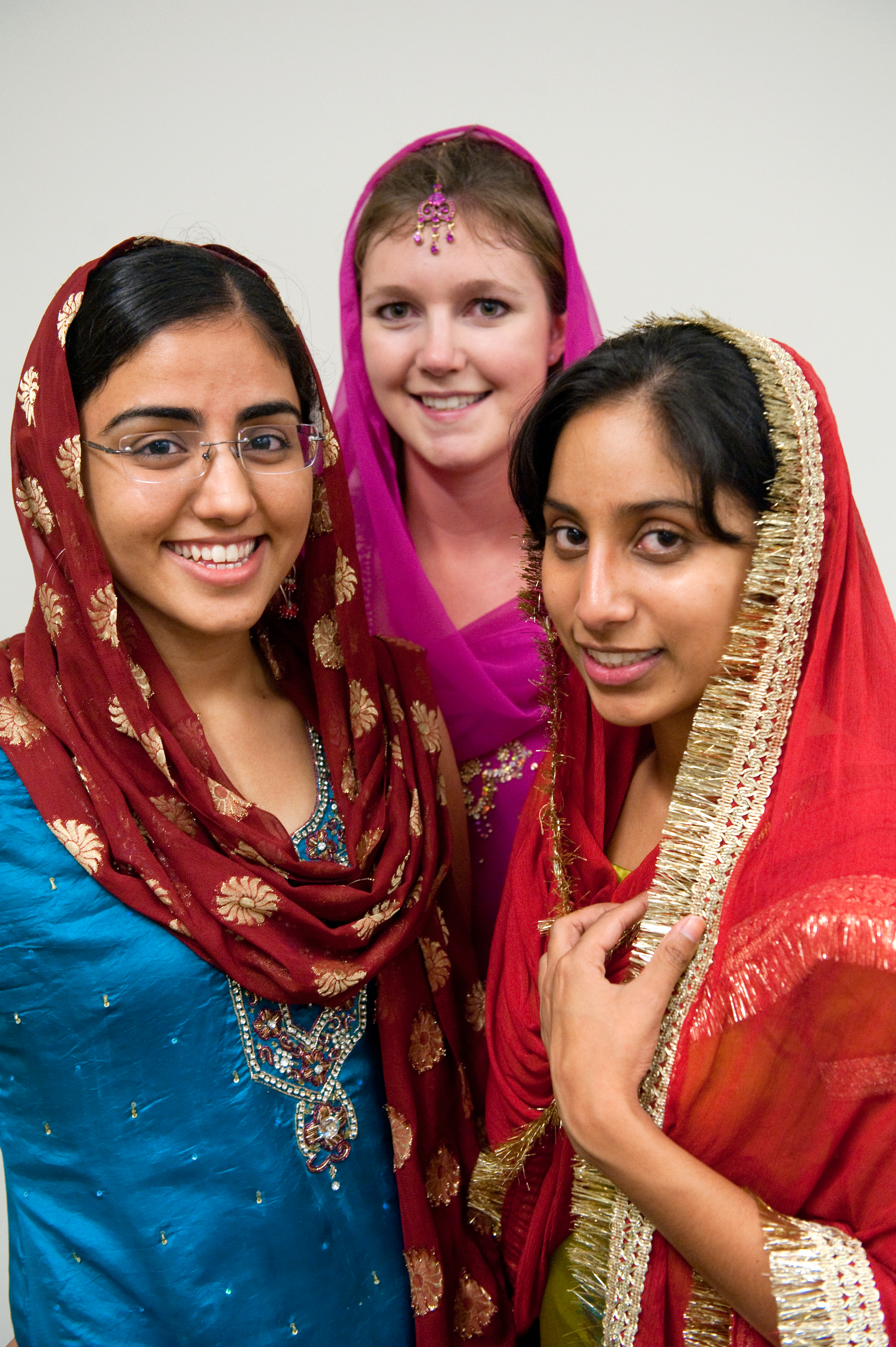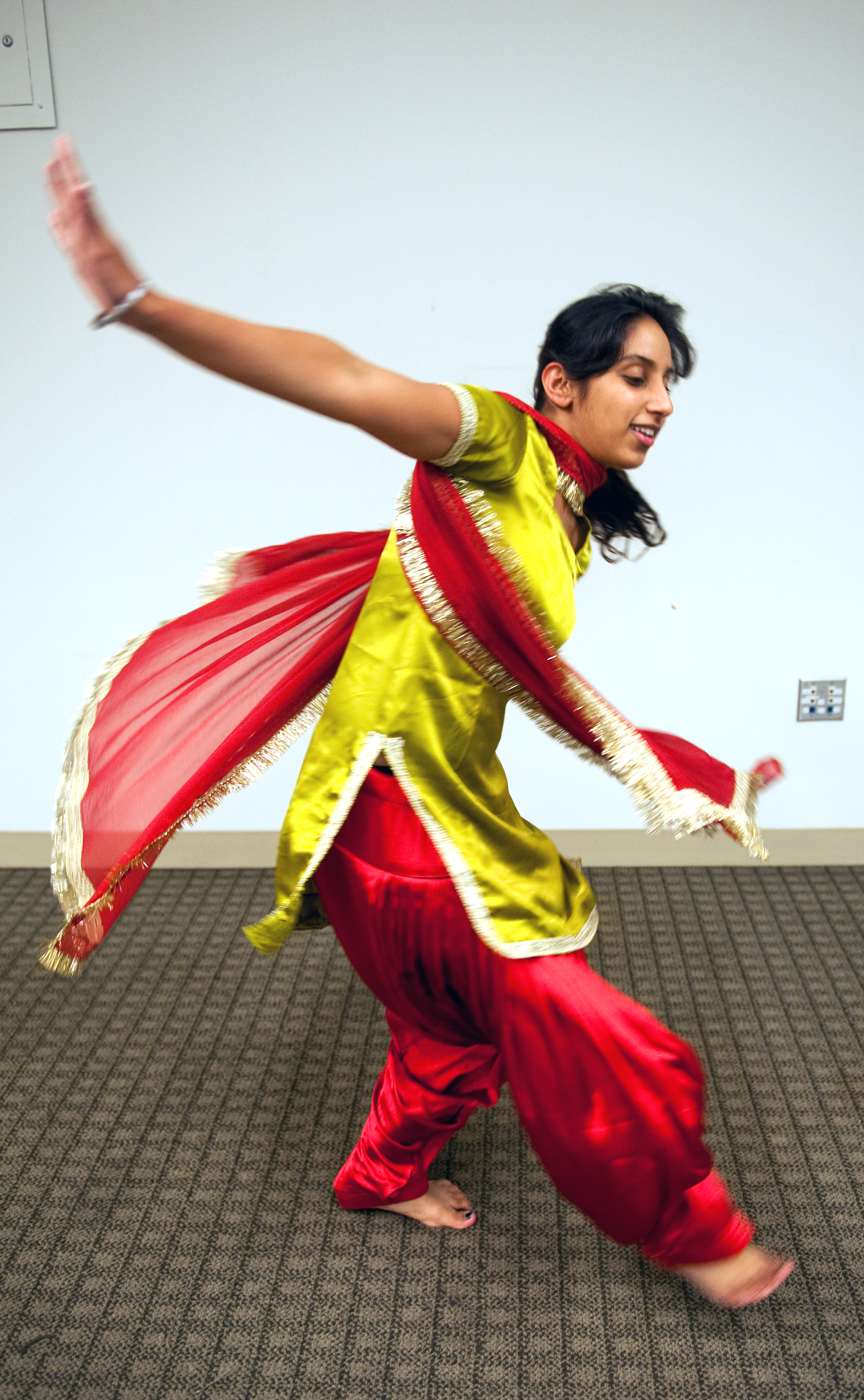
Blending forms old and new, Indian dance styles harmonize the body’s ability to tell a story.
Tradition and culture constitute a large part of each style. This tradition can be contemporary in the sense of Nashaa dance team’s highly energized Bollywood-inspired dance, or customary, as in Gidha for a Cause. Gidha for a Cause uses the lyrical dance form Gidha from the Punjab region of northern India as a way to raise money for campus nonprofit groups.
In their performances, the Nashaa dance team collaborates to relay a story by bringing in the elements of dance, dialogue, characters, backdrops and props that are relatable to Bollywood films.
“What we do is aim to recreate that sense of musical and dance-filled storytelling that is inspired by Bollywood movies and bring them to stage,” said Manoo Murthy, Nashaa dance team captain and a fourth-year economics student.
According to Murthy, the Nashaa dance members claim their love for Bollywood films and culture as inspiration for their vibrant dancing style.
“My entire family would go out and watch Bollywood movies all the time, and one of the big parts of Bollywood movies is obviously their songs and their dancing,” said Aditya Gulati, a Nashaa member and a second-year business economics student. “We went to the competitions in high school to watch, and it was a lot of fun to just watch, which made me want to go on and dance.”
Though Nashaa uses Bollywood as the underlying theme for their performances, they also incorporate a medley of other dance styles, such as hip-hop and jazz.
“Bollywood, as a dancing genre, is really young, and as a result it’s not very well defined,” Murthy said. “Like how tap and ballet have these very specific theories of movement, that doesn’t exist in Bollywood.”
The Nashaa dance team extracts the sense of openness that comes with Bollywood dance culture and applies their creativity on stage. According to the team members, this technique has enabled them to win a number of competitions since their founding nine years ago.
“Right now Nashaa is considered, and has been considered, one of the best teams in the Bollywood category around the country,” Murthy said.
“Being a close group of friends on the dance team and sort of pushing and fostering that friendship outside of practice really helps us in our competition, and it’s one of the biggest factors to our success.”
In contrast to Nashaa’s more modern Bollywood style, dance group Gidha for a Cause relies on the intricacies of Punjabi culture. The Gidha dance style aims to tell a story that gives an expressive voice to women.
“The story might talk about something that happened in a woman’s daily life, something like embroidering a peacock on a scarf that she’s going to use to cover her head later on,” said Satvinder Dhaliwal, the group’s founder and a fifth-year anthropology student. “That’s considered a woman’s activity in traditional Punjab.”
A traditional Gidha performance begins when the dancers form a semi-circle and relay a verse, often with the aid of hand motions and a very lyrical style of movement.
“Gidha can probably be described as a play on lyrics,” Dhaliwal said. “It’s very important to how you portray yourself in Gidha because it’s more of a play. … It’s important to allow the dancers to bring their own personality to the dance.”
According to Dhaliwal, Gidha for a Cause uses the Gidha dance as a way to exude female empowerment while also helping the community.
Gidha for a Cause has helped raise money for a variety of nonprofit groups on campus, including GlobeMed, an organization dedicated to global health, and Wish, a literacy advocacy group.
“I felt like Gidha had a positive influence on my life, so I wanted to bring it on the UCLA campus so it would have positive influence on other people’s lives,” Dhaliwal said.
